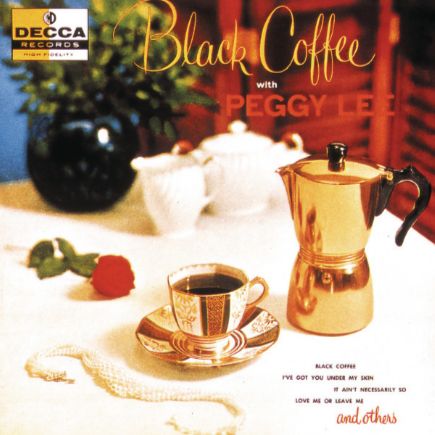I Didn’t Know What Time It Was: un standard entre Broadway et jazz moderne
Composée en 1939 par Richard Rodgers, avec des paroles de Lorenz Hart, I Didn’t Know What Time It Was voit le jour dans la comédie musicale Too Many Girls. Introduite sur scène par Richard Kollmar et Marcy Westcott, la chanson connaît rapidement un large succès grâce aux enregistrements de Benny Goodman et Artie Shaw (avec la voix d’Helen Forrest).
À la fois élégante et subtile, la composition séduit par sa structure harmonique raffinée, typique du style Rodgers & Hart, et par un texte d’une grande finesse émotionnelle. Les paroles traduisent le bouleversement amoureux avec une sensibilité introspective: l’instant où l’on perd toute notion du temps face à l’évidence d’un sentiment naissant.
I Didn’t Know What Time It Was incarne pleinement l’esprit de l’âge d’or de la comédie musicale américaine, au tournant des années 1930 et 1940, période de bouillonnement créatif où Broadway et le jazz s’enrichissent mutuellement.
Ce morceau s’est imposé comme un standard durable, revisité en swing, en ballade ou en bebop, par des chanteurs comme des instrumentistes. Sa longévité tient autant à sa richesse harmonique qu’à sa capacité à s’adapter aux styles les plus variés, traversant les décennies sans perdre sa fraîcheur.
Peggy Lee, l’art de la retenue et de la suggestion
Enregistrée à New York le 30 avril 1953, la version de I Didn’t Know What Time It Was par Peggy Lee appartient à ces interprétations où chaque nuance compte, où la moindre inflexion de la voix semble suspendre le temps. Extraite de l’album Black Coffee, publié en 1956, cette lecture incarne l’élégance introspective de la chanteuse au sommet de son art.
Loin des orchestrations grandioses qu’elle a parfois explorées, Lee choisit ici un format intime, presque dépouillé, révélant toute la subtilité de son rapport au swing et au silence. Autour d’elle, un quartette: la trompette de Pete Candoli, à la sonorité veloutée, le piano de Jimmy Rowles, d’une élégance classique, et une section rythmique (Max Wayne à la basse et Ed Shaughnessy à la batterie), qui soutient la voix sans jamais l’envelopper.
Dans I Didn’t Know What Time It Was, Peggy Lee explore la mélancolie du texte avec une intelligence émotionnelle rare. Sa diction précise, son souffle maîtrisé et son phrasé légèrement décalé instaurent un dialogue constant entre retenue et émotion. Cet enregistrement s’inscrit dans une période charnière pour Peggy Lee, où elle se détache de ses premiers succès avec Benny Goodman pour affirmer sa carrière solo.
I Didn’t Know What Time It Was: un estándar entre Broadway y el jazz moderno
Compuesta en 1939 por Richard Rodgers, con letra de Lorenz Hart, I Didn’t Know What Time It Was nació en el musical Too Many Girls. Presentada en escena por Richard Kollmar y Marcy Westcott, la canción alcanzó rápidamente gran popularidad gracias a las grabaciones de Benny Goodman y Artie Shaw (con la voz de Helen Forrest).
Elegante y sutil, la pieza seduce por su estructura armónica refinada —típica del dúo Rodgers & Hart— y por un texto cargado de sensibilidad emocional. La letra expresa con delicadeza el desconcierto del enamoramiento: ese momento en que se pierde la noción del tiempo ante la evidencia de un sentimiento que emerge.
I Didn’t Know What Time It Was encarna plenamente el espíritu de la edad de oro del musical estadounidense, a finales de los años 30 y comienzos de los 40, una época de intensa creatividad donde Broadway y el jazz se enriquecían mutuamente.
Convertida en un estándar duradero, ha sido reinterpretada en versiones swing, balada o bebop, tanto por vocalistas como por instrumentistas. Su longevidad se debe tanto a su riqueza armónica como a su notable capacidad de adaptación, que le ha permitido atravesar las décadas sin perder frescura ni relevancia.
Peggy Lee: el arte de la contención y la sugerencia
Grabada en Nueva York el 30 de abril de 1953, la versión de I Didn’t Know What Time It Was de Peggy Lee pertenece a esas interpretaciones donde cada matiz cuenta, donde la más mínima inflexión de la voz parece detener el tiempo. Extraída del álbum Black Coffee, publicado en 1956, esta lectura encarna la elegancia introspectiva de una cantante en la cima de su arte.
Lejos de las grandiosas orquestaciones que en ocasiones había explorado, Lee elige aquí un formato íntimo, casi desnudo, que revela toda la sutileza de su relación con el swing y el silencio. A su alrededor, un cuarteto de cohesión ejemplar: la trompeta de Pete Candoli, de sonido aterciopelado; el piano de Jimmy Rowles, de elegancia clásica; y una sección rítmica compuesta por Max Wayne en el contrabajo y Ed Shaughnessy en la batería, que sostiene la voz sin imponerse jamás.
En I Didn’t Know What Time It Was, Peggy Lee explora la melancolía del texto con una inteligencia emocional poco común. Su dicción precisa, su respiración controlada y su fraseo ligeramente desplazado instauran un diálogo constante entre contención y emoción. Esta grabación marca un momento crucial en la carrera de Lee, cuando se distancia de sus primeros éxitos con Benny Goodman para afirmar su identidad como solista independiente y plenamente madura.
I Didn’t Know What Time It Was: uno standard tra Broadway e jazz moderno
Composta nel 1939 da Richard Rodgers, con testo di Lorenz Hart, I Didn’t Know What Time It Was nasce all’interno del musical Too Many Girls. Presentata sul palcoscenico da Richard Kollmar e Marcy Westcott, la canzone ottiene rapidamente un grande successo grazie alle registrazioni di Benny Goodman e Artie Shaw (con la voce di Helen Forrest).
Elegante e sottile, questa composizione conquista per la sua struttura armonica raffinata — tipica dello stile Rodgers & Hart — e per il testo di grande delicatezza emotiva. Le parole esprimono con introspezione lo smarrimento dell’innamoramento: quel momento in cui si perde la cognizione del tempo davanti all’evidenza di un sentimento che nasce.
I Didn’t Know What Time It Was incarna lo spirito della golden age del musical americano, a cavallo tra gli anni ’30 e ’40, un periodo di fervore creativo in cui Broadway e il jazz si influenzavano a vicenda.
Diventato uno standard intramontabile, il brano è stato reinterpretato in chiave swing, ballad o bebop da cantanti e strumentisti. La sua longevità si deve tanto alla sua ricchezza armonica quanto alla versatilità, che gli ha permesso di attraversare epoche e stili senza perdere attualità né freschezza.
Peggy Lee: l’arte della misura e della suggestione
Incisa a New York il 30 aprile 1953, la versione di I Didn’t Know What Time It Was di Peggy Lee appartiene a quelle interpretazioni in cui ogni sfumatura conta, dove la minima inflessione della voce sembra sospendere il tempo. Tratta dall’album Black Coffee, pubblicato nel 1956, questa lettura rappresenta l’eleganza introspettiva di una cantante al culmine della sua arte.
Lontana dalle grandi orchestrazioni che talvolta aveva esplorato, Lee sceglie qui un formato intimo, quasi spoglio, che rivela tutta la finezza del suo rapporto con il swing e con il silenzio. Intorno a lei, un quartetto di grande coesione: la tromba di Pete Candoli, dal suono vellutato; il pianoforte di Jimmy Rowles, di eleganza classica; e una sezione ritmica con Max Wayne al contrabbasso ed Ed Shaughnessy alla batteria, che sostiene la voce senza mai sopraffarla.
In I Didn’t Know What Time It Was, Peggy Lee esplora la malinconia del testo con un’intelligenza emotiva rara. La sua dizione precisa, il controllo del respiro e il fraseggio leggermente spostato instaurano un equilibrio costante tra misura ed emozione. Questa registrazione segna una fase decisiva nella sua carriera, in cui si emancipa dai primi successi con Benny Goodman per affermarsi come artista solista matura e indipendente.
I Didn’t Know What Time It Was: a standard between Broadway and modern jazz
Composed in 1939 by Richard Rodgers with lyrics by Lorenz Hart, I Didn’t Know What Time It Was was introduced in the Broadway musical Too Many Girls. Premiered on stage by Richard Kollmar and Marcy Westcott, the song quickly gained popularity through recordings by Benny Goodman and Artie Shaw (featuring vocalist Helen Forrest).
Elegant and nuanced, the piece stands out for its refined harmonic structure — characteristic of the Rodgers & Hart style — and its emotionally sensitive lyrics. The words evoke the disorientation of falling in love, capturing that moment when time seems to vanish in the presence of a newfound feeling.
I Didn’t Know What Time It Was perfectly embodies the spirit of the golden age of American musical theatre at the turn of the 1930s and 1940s — a time of intense creativity when Broadway and jazz were in constant dialogue.
Now a lasting standard, the piece has been revisited in swing, ballad, and bebop styles by both singers and instrumentalists. Its enduring appeal lies in both its harmonic richness and its remarkable adaptability, allowing it to travel through decades and genres without losing its freshness.
Peggy Lee: the art of restraint and suggestion
Recorded in New York on April 30, 1953, Peggy Lee’s version of I Didn’t Know What Time It Was belongs to those performances where every nuance matters and each vocal inflection seems to suspend time. Taken from the 1956 album Black Coffee, it embodies the introspective elegance of a vocalist at the height of her artistry.
Far from the grand orchestrations she sometimes embraced, Lee here opts for an intimate, almost bare format that reveals the full subtlety of her relationship to swing and silence. Around her, a perfectly balanced quartet: Pete Candoli on trumpet, with a velvety tone; Jimmy Rowles on piano, with classical elegance; and a rhythm section—Max Wayne on bass and Ed Shaughnessy on drums—that supports her voice without ever overpowering it.
In I Didn’t Know What Time It Was, Peggy Lee explores the song’s melancholy with uncommon emotional intelligence. Her precise diction, controlled breathing, and slightly delayed phrasing create a constant dialogue between restraint and emotion. This recording marks a turning point for Lee, as she steps away from her early successes with Benny Goodman to assert herself as a mature, independent artist.


